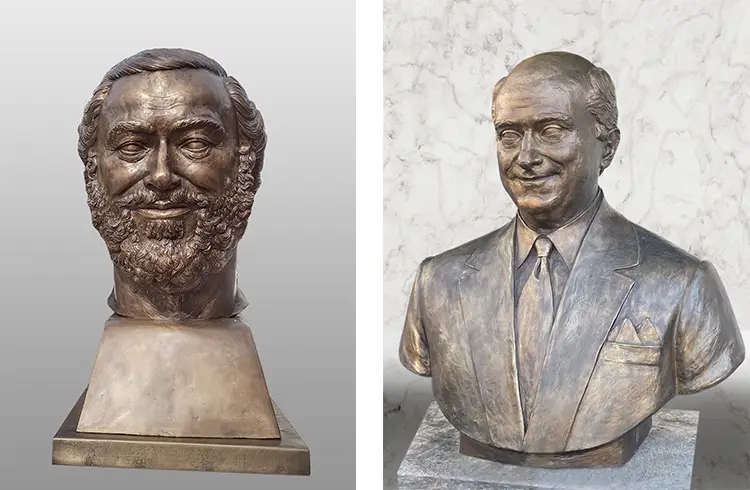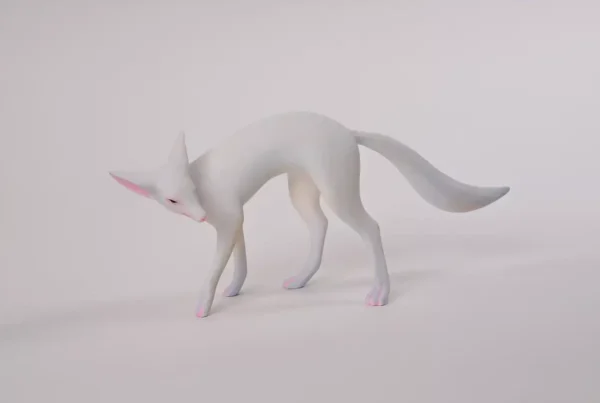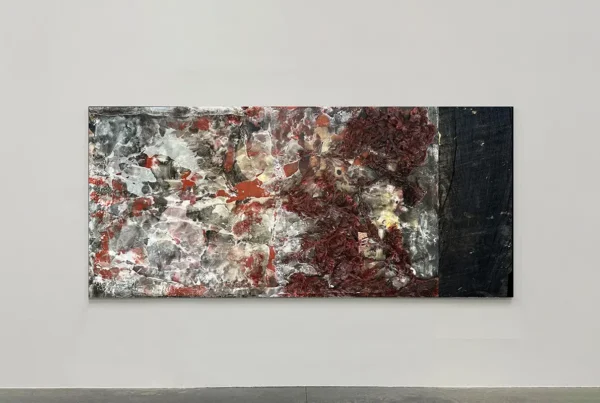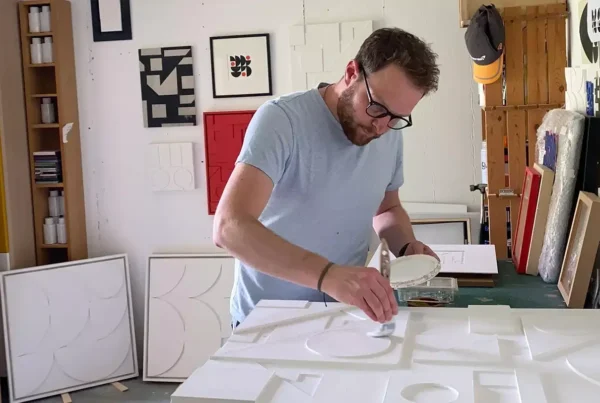“The portrait is the mirror of the soul.”
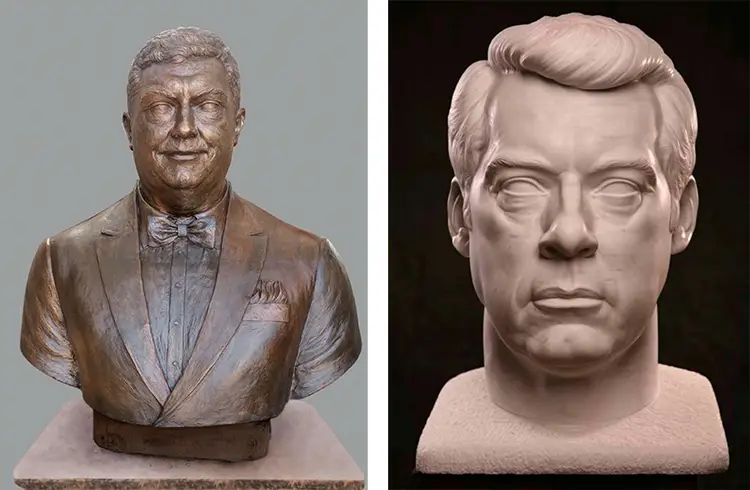
The Formative Years: A Vision Rooted in Classical Beauty
Qazim Arifi’s journey into the world of sculpture began not with marble or bronze, but with the simple drawings of a child in post-war Albania. Born on December 10, 1942, in the village of Hotova in the Përmet region, Arifi showed an early fascination with shape and form. Encouraged by his primary school teachers in Tirana, he enrolled in a national art competition in 1955, earning first prize at the age of thirteen. This pivotal moment ignited a dream that would guide him through the rigorous corridors of Albanian and European art education. He later gained admission to the Jordan Misja Art School in Tirana, where his focus on sculpture brought him under the mentorship of Kristina Koljaka, a prominent artist educated in Florence, whose classical training would have a lasting influence on his own artistic sensibility.
Following his secondary education, Arifi was admitted to the University of Fine Arts in Tirana, studying sculpture between 1960 and 1965. His formation deepened under Professor Shaban Haderi, a distinguished sculptor shaped by the artistic discipline of the Leningrad Academy of Fine Arts. These years cemented Arifi’s classical orientation while introducing him to a sculptural rigor that emphasized both intellectual engagement and technical control. His affinity for the idealism of Greek-Roman antiquity and the spiritual grandeur of the Italian Renaissance became foundational to his artistic identity. These inspirations, imprinted early in his education, would later emerge as defining characteristics in his mature works, where structure, symbolism, and the human form intersect with expressive restraint.
From 1970 to 1990, Arifi’s professional life led him away from direct artistic practice, working instead in state-owned foreign trade enterprises that dealt in wood, silver, and copper handicrafts. Despite the absence from the studio, these two decades were far from lost. His work allowed him to travel to international museums during a time when Albania remained largely closed to the outside world. The exposure to global artistic masterpieces was transformative. These encounters sharpened his understanding of sculptural depth, plasticity, and the emotive potential of figuration. In 1991, following Albania’s political transition, Arifi returned fully to sculpture. With a mature perspective and renewed purpose, he re-engaged with his art, positioning himself across Albania, Italy, and the United States while gradually establishing an international presence.
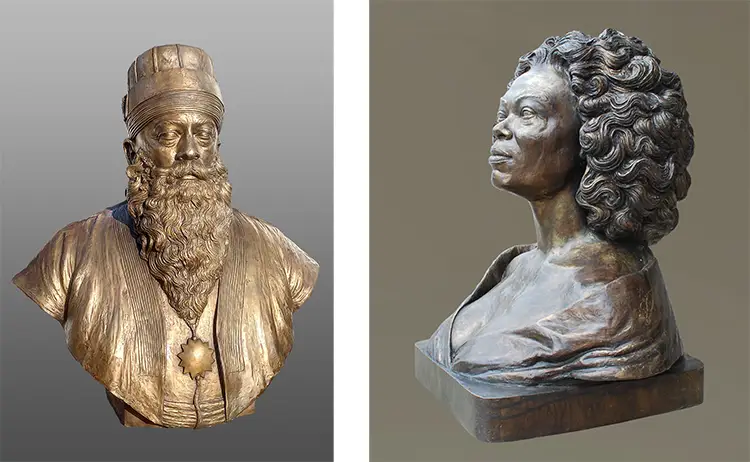
Qazim Arifi: Portraits as Vessels of Meaning
At the core of Qazim Arifi’s practice lies an unwavering commitment to portraiture, a genre he believes captures not only the physical features of a subject but also their spirit, intellect, and emotional substance. He regards the portrait as the most complex aspect of sculpture, where the face becomes a map of experience and character. Arifi approaches each piece as both a historical document and an emotional landscape. Through bronze and marble, he shapes individuals whose impact on cultural, political, and spiritual life continues to resonate. His works are not fleeting representations; they are acts of commemoration, celebrating those who have altered the course of human life through action, thought, and presence.
Among his most celebrated pieces are the Portrait of Ismail Kadare (2012), a bronze capturing the solemn vision of Albania’s most internationally recognized writer, and the Bust of Baba Mondi (2016), which blends religious reverence with human warmth in its depiction of the Bektashi spiritual leader. The monumental Bust of Luciano Pavarotti (2021) radiates vitality and grandeur, while his bronzes of popes John Paul II, Benedict XVI, and Francis communicate divine introspection through sculptural detail. One particularly nuanced piece, the Portrait of Arturo Schwarz (2018), pays tribute to the prominent gallerist, blending intellectual gravitas with expressive empathy. In each work, Arifi seeks not merely to preserve a likeness, but to animate a dialogue between sculpture and viewer, where recognition deepens into reflection.
Critical response to Arifi’s body of work affirms his position as a major figure in contemporary classical sculpture. Art historians such as Arpinè Sevagian and Rosario Pinto have emphasized the way his portraits synthesize emotional precision with compositional authority. Sevagian, in particular, has described Arifi’s hand as possessing “interpretative intelligence” and “extraordinary manual sensitivity,” noting how his sculptures navigate the line between aesthetic homage and spiritual inquiry. Other influential critics and art historians, including Sandro Serradifalco, Angelo Crespi, Prof. Paolo Levi, and Vittorio Sgarbi, have also written about his work, underscoring its philosophical depth and refined technique.
Over the years, Arifi has been honored with more than 50 awards, including the International Michelangelo Award and the Artist of the Year title (2022) from Brussels’ Espace Art Gallery. His works have been featured in prestigious venues from the Louvre’s Carrousel to MEAM in Barcelona, and are also included in CAM, Catalogo dell’Arte Moderna Contemporanea, issues 58, 59, 60, and 61, one of the leading reference catalogues in the field. This broad recognition positions him as a leading interpreter of human identity through sculptural form.
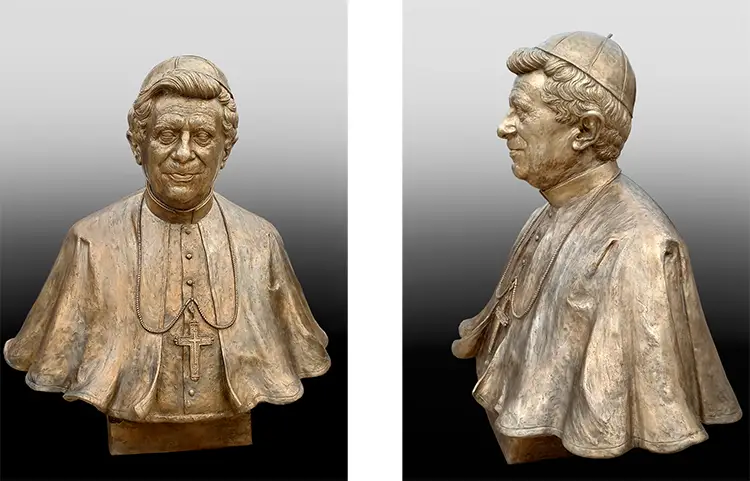
Material Memory: Sculpting the Inner World
Arifi’s preferred materials—bronze and marble—are chosen not merely for their durability but for their capacity to embody time, presence, and psychological resonance. Bronze allows him to capture subtle shifts in emotion through nuanced surfaces, while marble offers a purity that enhances the spiritual themes present in many of his works. Yet what distinguishes Arifi is not only his medium, but his method. Each sculpture begins with careful sketching, allowing him to explore the subject’s character before transitioning into form. He typically follows a conceptual program for his subjects, but remains open to alteration, letting the work evolve organically as it responds to the materials and the presence of the model.
His stylistic vocabulary merges classical restraint with expressive lucidity. While his forms remain grounded in historical sculpture—most notably the gravitas of Roman portraiture—Arifi resists mere imitation. Instead, he channels tradition to address contemporary concerns, particularly the preservation of memory and the communication of human dignity. Through restrained gestures and refined surfaces, he communicates interiority: the solitude of thought, the burden of leadership, the serenity of faith. Works such as the Bust of Muhamet Malaj (2023) exemplify this approach, presenting the subject not only as an individual but as a symbol of cultural perseverance and collective identity. This sculptural language, where clarity meets ambiguity, renders Arifi’s work both timeless and quietly revolutionary.
Arifi’s commitment to figuration is also philosophical. He regards art as a form of documentation, a living archive of human achievement, emotion, and legacy. His sculptures serve as visual testaments to lives that have shaped society, often portraying artists, historians, poets, and public leaders who have contributed to the improvement of humanity. He believes that the artist’s task is to infuse each figure with force, thought, and psychological complexity. For Arifi, when a sculpture succeeds in these aspects, it begins to communicate—its presence animates a silent dialogue between the artwork and the viewer. In this exchange, the figure becomes a mirror, reflecting not only the identity of the subject but also the viewer’s own capacity for empathy, understanding, and reverence.
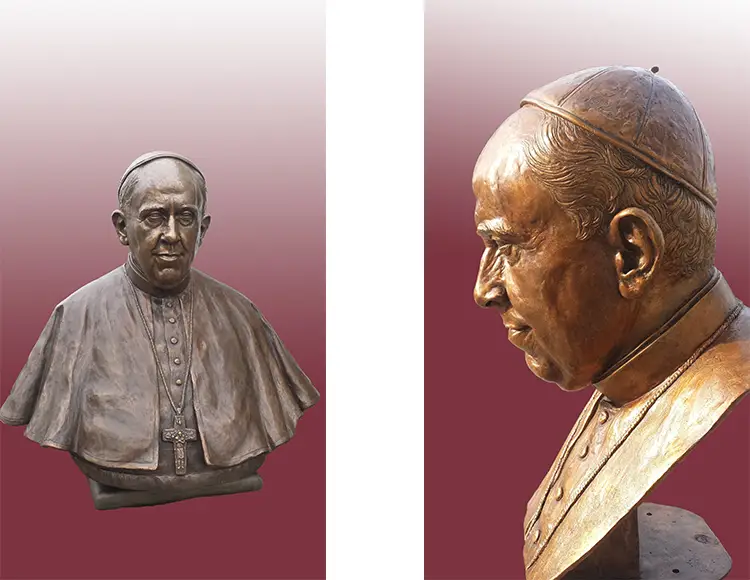
Qazim Arifi: A Sculptor in Dialogue with Time
In the years following his return to full-time artistic practice, Qazim Arifi has participated in nearly 90 national and international exhibitions, earning a coefficient of 50 on the global art market. His works have been exhibited in New York, Washington, Los Angeles, Miami, Chicago, London, Berlin, Brussels, Budapest, Pristina, Dubai, Peking, Tokyo, Milan, Florence, Ferrara, Padova, Rome, Palermo, Naples, Lecce, and La Spezia. His inclusion in respected catalogues such as Artisti ’19–’25, Atlanti, and numerous art journals confirms both the consistency and evolution of his contribution to sculpture. Prestigious biennials and expos—including the Venezia Art Expo, International Biennale of Flanders, and exhibitions at the Louvre and MEAM—have helped solidify his status as an artist whose classical foundation offers a relevant voice in the contemporary landscape. His ability to bridge different cultural histories while remaining firmly grounded in the sculptural tradition has made his work resonate across borders.
Arifi’s sculptural philosophy remains consistent even as his practice has gained international scope. He insists that each work begin not with spectacle, but with study: the search for the interior truth of the subject. This is evident in his portraits of political figures like Barack Obama and Ronald Reagan, as well as Albanian Prime Minister Edi Rama. Rather than amplify status or power, these works emphasize humanity, creating figures that are both recognizable and meditative. Through the sculptor’s hands, public icons become human again—anchored in material, shadow, and stillness. This ability to reinvest the monumental with intimacy is what sets Arifi apart in a field often driven by abstraction or ephemerality.
His impact extends beyond individual works to the revitalization of the figurative tradition itself. Arifi is often cited by critics and researchers as a leading voice in what has been called the “new classical” trend in contemporary sculpture. This movement seeks to recover the moral and aesthetic values of historical art while adapting them to today’s cultural context. Through his commitment to form, character, and expressive depth, Arifi represents a sculptural ethic that resists obsolescence. His works do not merely survive the passage of time—they embody it. Through marble and bronze, he channels the continuity of human experience, reaffirming the enduring power of the sculpted image to preserve memory, inspire change, and speak across generations.
